Fiber-Optic Cabling (30.5)
Networking media selection is being driven by the growing needs for network bandwidth. The distance and performance of fiber-optic cable make it a good media choice to support these network needs. This topic will examine the characteristics of fiber-optic cabling use in data networks.
Properties of Fiber-Optic Cabling (30.5.1)
As you have learned, fiber-optic cabling is the other type of cabling used in networks. Because it is expensive, it is not as commonly used at the various types of copper cabling. But fiber-optic cabling has certain properties that make it the best option in certain situations, which you will discover in this topic.
Optical fiber cable transmits data over longer distances and at higher bandwidths than any other networking media. Unlike copper wires, fiber-optic cable can transmit signals with less attenuation and is completely immune to EMI and RFI. Optical fiber is commonly used to interconnect network devices.
Optical fiber is a flexible, but extremely thin, transparent strand of very pure glass, not much bigger than a human hair. Bits are encoded on the fiber as light impulses. The fiber-optic cable acts as a waveguide, or “light pipe,” to transmit light between the two ends with minimal loss of signal.
As an analogy, consider an empty paper towel roll with the inside coated like a mirror. It is a thousand meters in length, and a small laser pointer is used to send Morse code signals at the speed of light. Essentially that is how a fiber-optic cable operates, except that it is smaller in diameter and uses sophisticated light technologies.
Types of Fiber Media (30.5.2)
Fiber-optic cables are broadly classified into two types:
Single-Mode Fiber
SMF consists of a very small core and uses expensive laser technology to send a single ray of light, as shown in Figure 30-22. SMF is popular in long-distance situations spanning hundreds of kilometers, such as those required in long haul telephony and cable TV applications.
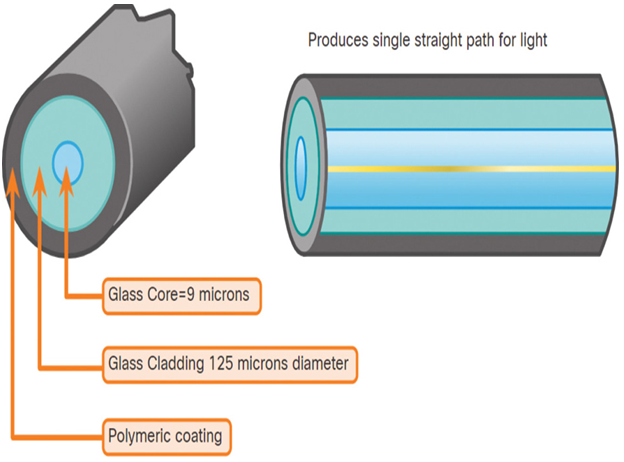
Figure 30-22 Single-Mode Fiber
Multimode Fiber
MMF consists of a larger core and uses LED emitters to send light pulses. Specifically, light from an LED enters the multimode fiber at different angles, as shown in Figure 30-23. Popular in LANs because they can be powered by low-cost LEDs. It provides bandwidth up to 10 Gbps over link lengths of up to 550 meters.
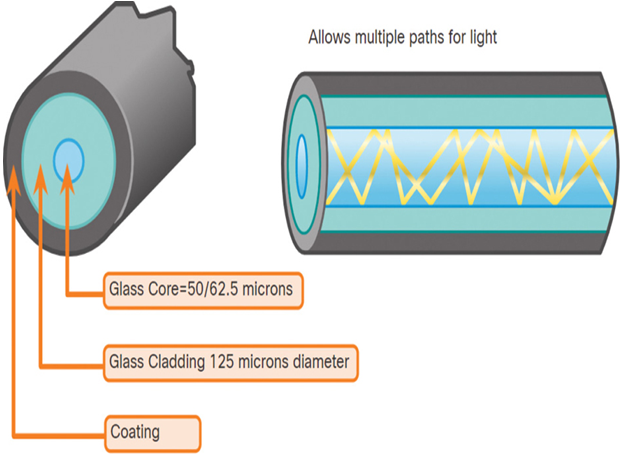
Figure 30-23 Multimode Fiber
One of the highlighted differences between MMF and SMF is the amount of dispersion. Dispersion refers to the spreading out of a light pulse over time. Increased dispersion means increased loss of signal strength. MMF has a greater dispersion than SMF. That is why MMF can only travel up to 500 meters before signal loss.
Fiber-Optic Cabling Usage (30.5.3)
Fiber-optic cabling is now being used in four types of industry:
- Enterprise Networks — Used for backbone cabling applications and interconnecting infrastructure devices
- Fiber-to-the-Home (FTTH) md] Used to provide always-on broadband services to homes and small businesses
- Long-Haul Networks — Used by service providers to connect countries and cities
- Submarine Cable Networks — Used to provide reliable high-speed, high-capacity solutions capable of surviving in harsh undersea environments at up to transoceanic distances. Search the internet for “submarine cables telegeography map” to view various maps online.
Our focus in this course is the use of fiber within the enterprise.
Fiber-Optic Connectors (30.5.4)
An optical-fiber connector terminates the end of an optical fiber. A variety of optical-fiber connectors are available. The main differences among the types of connectors are dimensions and methods of coupling. Businesses decide on the types of connectors that will be used, based on their equipment.
Note:
Some switches and routers have ports that support fiber-optic connectors through a small form-factor pluggable (SFP) transceiver. Search the internet for various types of SFPs.
ST connectors (Figure 30-24) were one of the first connector types used. The connector locks securely with a “Twist-on/twist-off” bayonet-style mechanism.
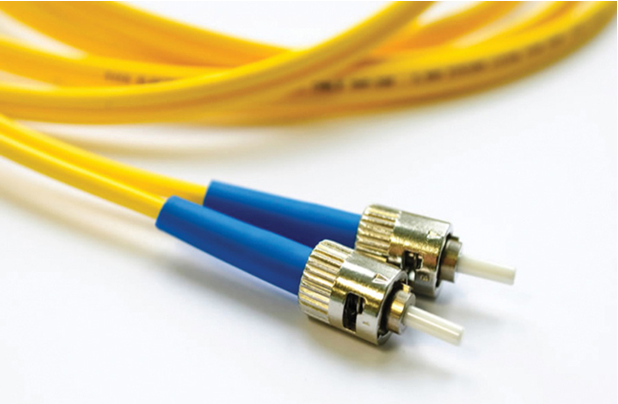
Figure 30-24 Straight-Tip (ST) Connectors
SC connectors (Figure 30-25) are sometimes referred to as square connector or standard connector. They are a widely-adopted LAN and WAN connector that uses a push-pull mechanism to ensure positive insertion. This connector type is used with multimode and single-mode fiber.
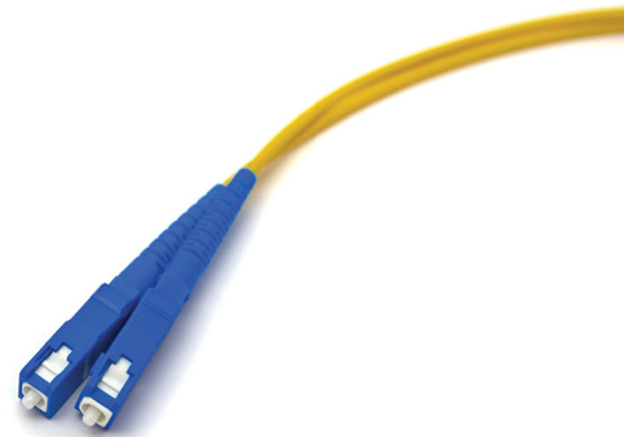
Figure 30-25 Subscriber Connector (SC) Connectors
LC simplex connectors (Figure 30-26) are a smaller version of the SC connector. These are sometimes called little or local connectors and are quickly growing in popularity due to their smaller size.
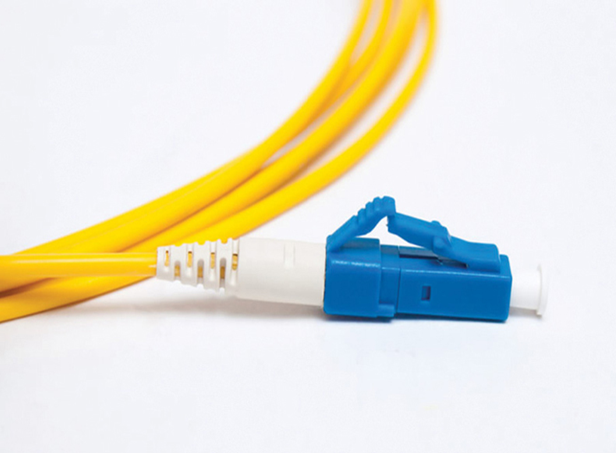
Figure 30-26 Lucent Connector (LC) Simplex Connectors
A duplex multimode LC connector (Figure 30-27) is similar to a LC simplex connector, but uses a duplex connector.
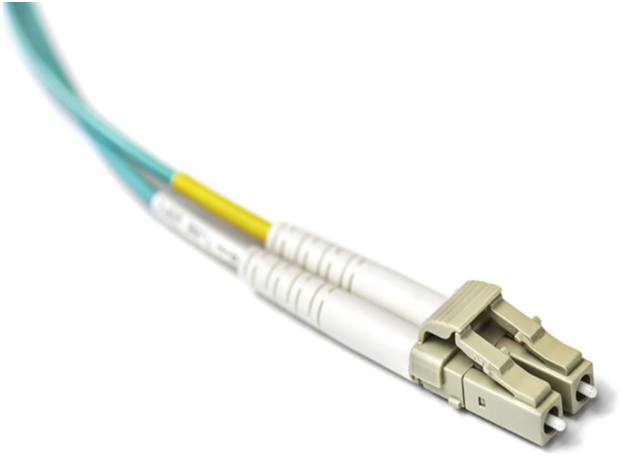
Figure 30-27 Duplex Multimode LC Connectors
Until recently, light could only travel in one direction over optical fiber. Two fibers were required to support the full duplex operation. Therefore, fiber-optic patch cables bundle together two optical fiber cables and terminate them with a pair of standard, single-fiber connectors. Some fiber connectors accept both the transmitting and receiving fibers in a single connector known as a duplex connector, as shown in the Duplex Multimode LC Connector in the figure. BX standards such as 100BASE-BX use different wavelengths for sending and receiving over a single fiber.
